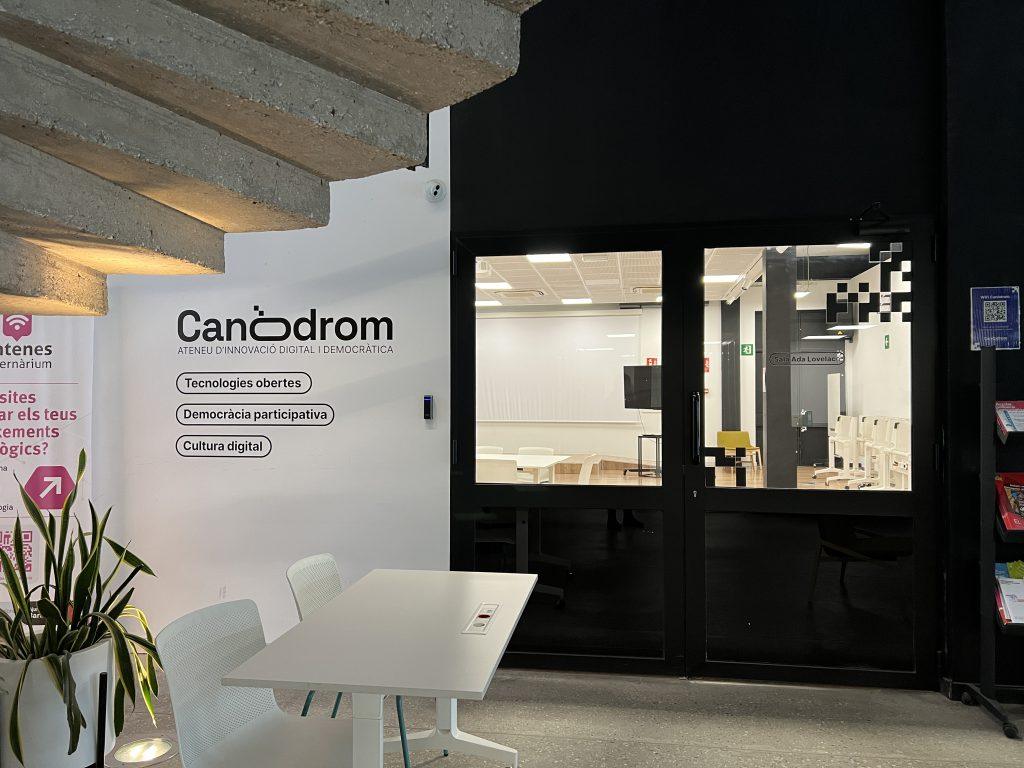Citizen participation in densification projects
A model for how residents can influence urban development in the early stages of the planning of large-scale densification projects
The research project developed a working model for how residents can influence urban development in the early stages when large-scale densification projects are planned. A neighbourhood from the 1960s and 70s was chosen as case study because these areas are potential densification objects.
The project was carried out in three work packages. WP1 developed and applied a tool for how residents can describe qualities and problems in their area, suggest places in need of densification and what kind of new housing or public functions these places need, as well as find forms of democratic decision-making when residents prioritize places. The tool was applied in two neighborhoods interesting from a densification perspective (Hjällbo and Biskopsgården). The work was based on previous studies in Hammarkullen with the tool Maptionnaire. WP2 formed and applied a method for resident-driven shaping of design criteria for public space, thus places that residents in WP1 consided to be most important to transform from a local perspective. WP3 found a strategy to communicate the proposals with decisions owners and conducting dialogue about them.
One common practical result of the project was a model for co-design, showing how collaborations between academia, civil society and municipalities – preferably through Civil Society Public Partnerships (CSPP) – can develop democratic systems for citizen participation. That result was presented in a book called Model Workshop which is available in Swedish and English. The project also resulted in an academic article.
Funder:
Formas
Budget:
3 million SEK
Time period:
2021–2024
Participants
University of Gothenburg:
Jenny Stenberg, project leader
Jaan-Henrik Kain
Chalmers University of Tecnology:
Marco Adelfio
Swedish Union of Tenants:
Jesper Bryngelsson
Alfredo Torrez
My Welther
Henrik Nilsson
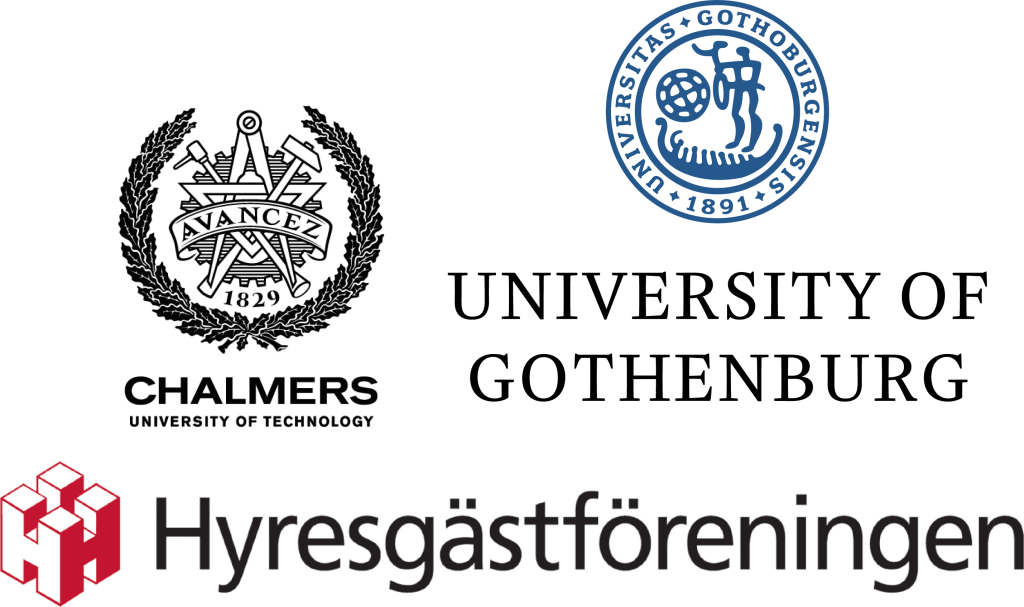
PROJECT RESULTS
— What we learned
“Developing a model for resident influence was much easier than getting municipal officials interested in asking residents what they think about their areas.”
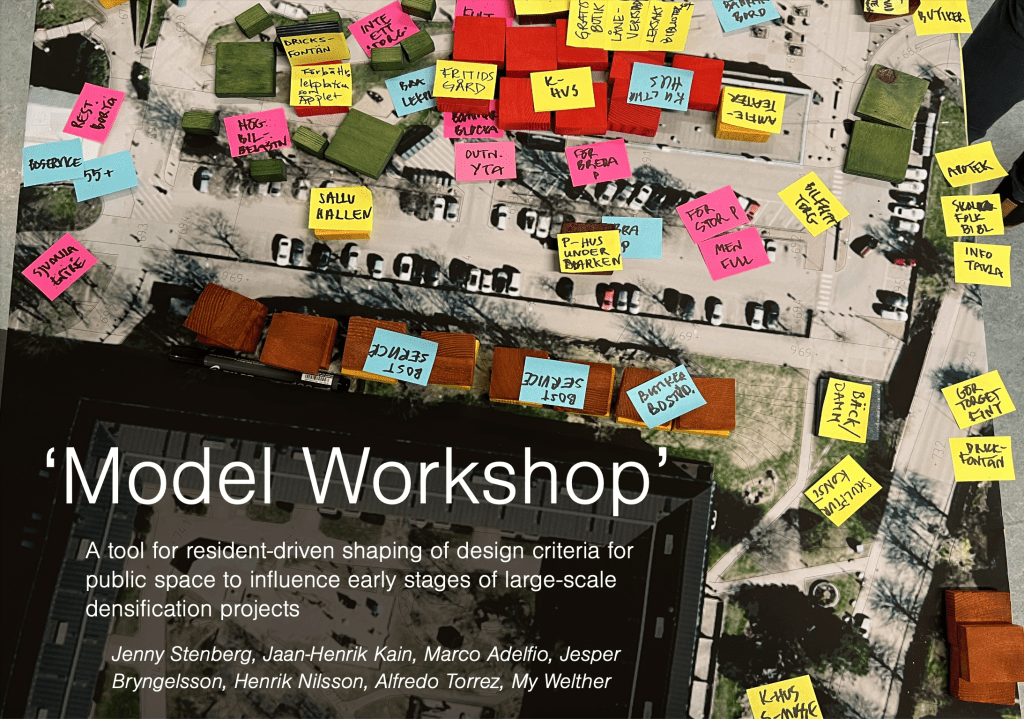
Book about Model Workshop 2024
This book presents the tool we developed for resident participation in the early stages of planning for urban transformation and densification. The tool let residents shape design criteria for public space through a design process, the idea being that design criteria have greater potential to influence planning programmes than do design proposals from residents. In the implementation and evaluations, it became clear that it was the combination of MapX surveys and Model Workshops that made the process productive, as the former provided collected intelligence and the latter supported the formation of collective intelligence, and both formats were equally important. A final learning workshop with municipal representatives showed that resident-driven design criteria, conveyed to the municipality through a civil society organization, can be understood by municipal representatives and may have the potential to influence planning strategies in early stages.
Read the book (English) (Swedish) ↗
Article about digital tools 2024
The fortcoming article Collecting citizen intelligence through a set of digital tools for early participation in urban planning processes describes how digital tools that are used daily by residents in social media can play a role in the development of local knowledge as a basis for densification programs that municipalities develop. The article looks at experiences both from our case studies in Sweden and from case studies in Spain.
Forthcoming ↗
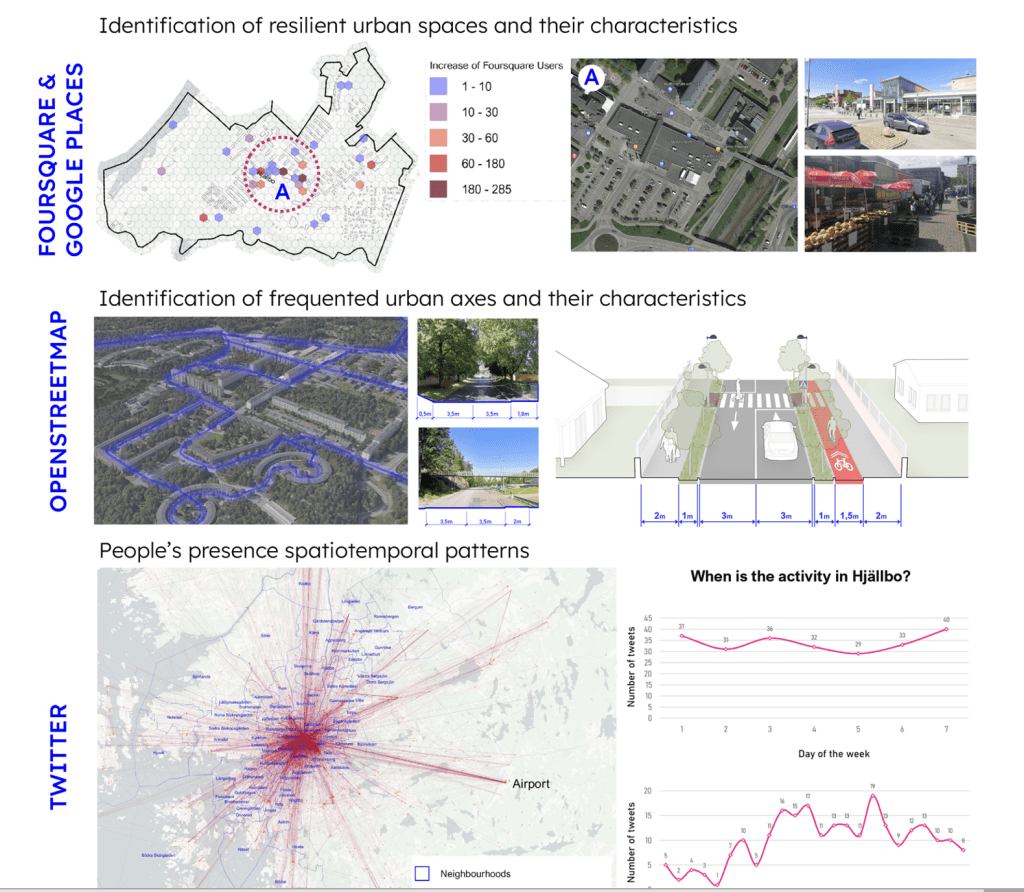
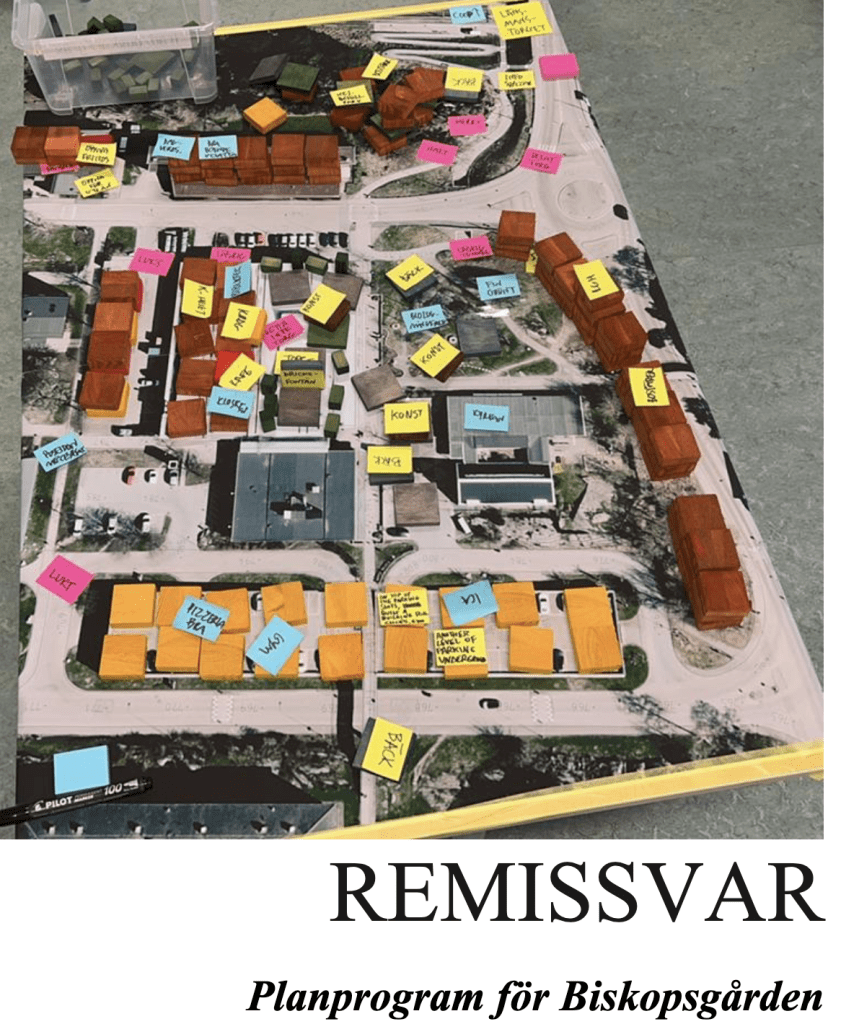
Referral response about Biskopsgården 2022
In Biskopsgården, the situation was different from Hjällbo and it was not the same officials who were responsible for that process. The densification program was not so large-scale in Biskopsgården and the tone of the text was different – more respectful. The process was also a little later in time and was not as rushed in terms of time from the municipality. Despite the fact that the interest in collaboration was greater, we carried out the same type of procedure in Biskopsgården, that is, the Union of Tenants submitted a comprehensive referral response based on, among other things, Model Workshops.
Referral response about Hjällbo 2022
When the project started, the municipality was asked if they were interested in collaborating with research on their program for densification in Hjällbo, which they were just about to start. The municipality declined cooperation. This meant that the research project acted independently from the municipality and at the end of the project we were able to deliver a referral response to the municipality regarding their program proposal, a response that was based on the workshops that we had conducted with residents. In Hjällbo, the residents were very critical of the municipality’s densification program and we therefore had the chance to develop the model and carry out the pilot studies in a context where there was a strong conflict between the municipality and the residents.
Read Union of Tenants’ submitted referral response to the municipality regarding their proposal for densification in Hjällbo (Swedish) ↗
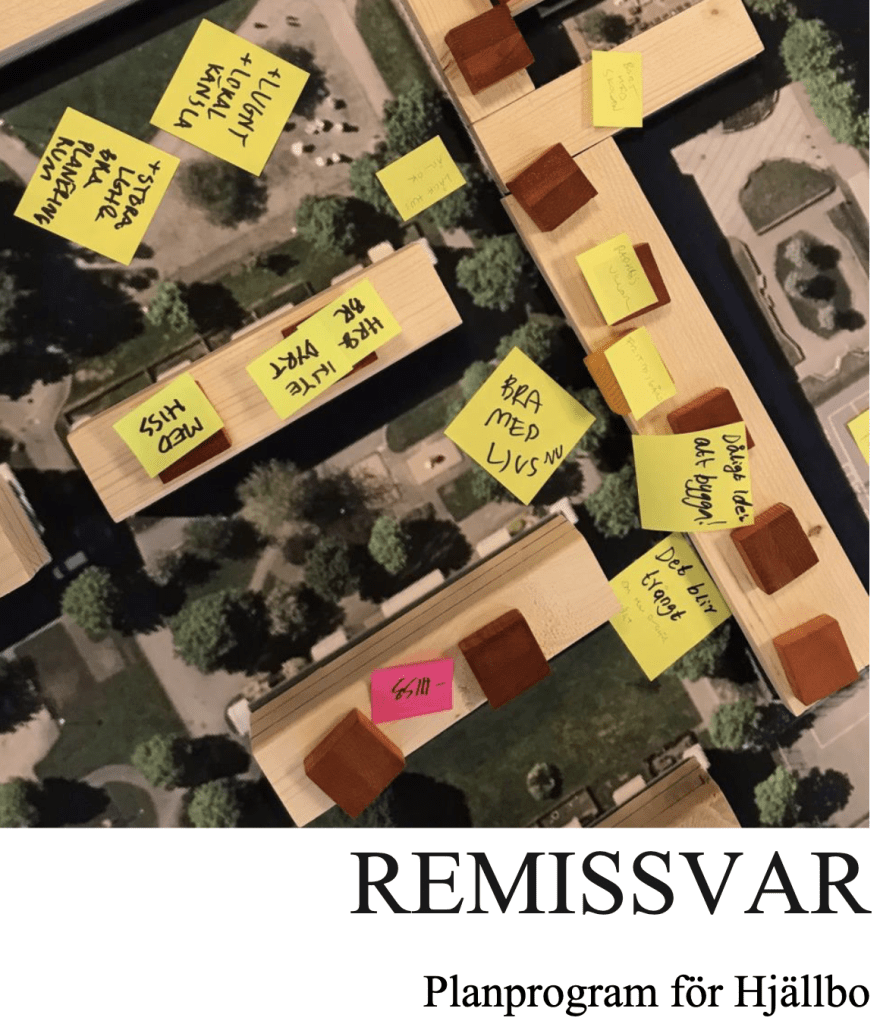
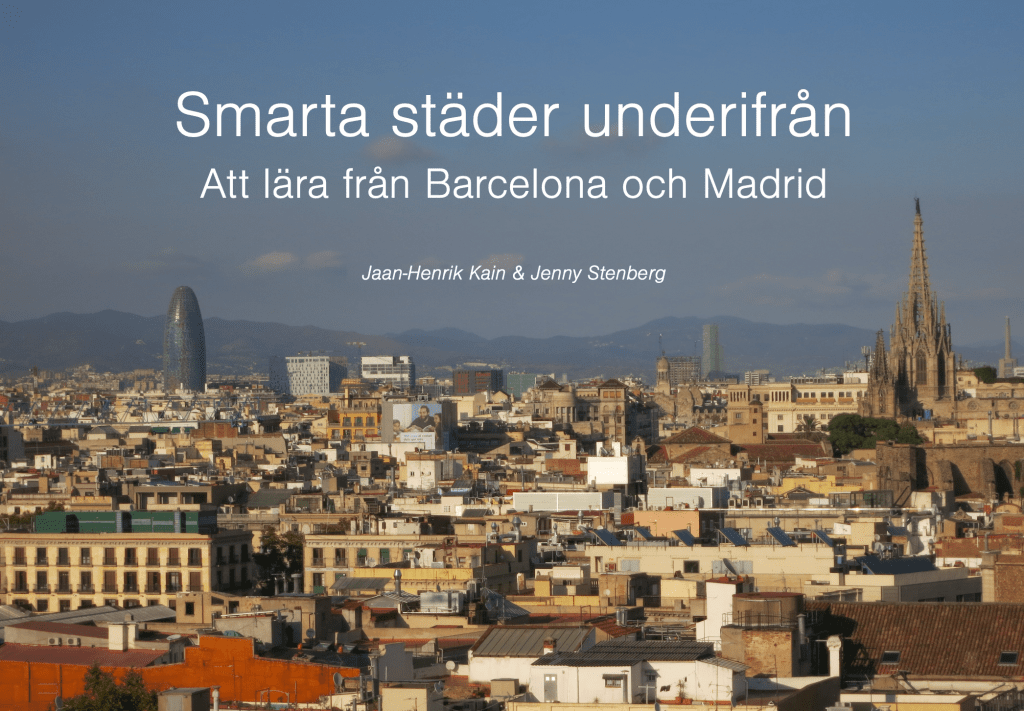
Book about smart cities 2024
This book reports the sister project The Third Generation Smart Swedish cities: Learning from Barcelona and Madridwith funding from Richterska stiftelsen. It examines how and in what way digital technologies can support citizens’ opportunities for greater influence in urban life and urban development and discuss whether cities can be both smart and democratic. It describes how a collective and joint intelligence can make a powerful contribution to increasingly smarter cities, not least as an important complement and balancing force to the collected intelligence. The focus is thus on people’s ability to be intelligent together, not on the artificial intelligence of machines.
Workshop about digital tools 2023
In January 2023 we were with the sister project on smart cities in Barcelona and Madrid to listen how they have used digital tools to involve residents in urban development. So, in a nutshell, what were the main things we’ve learned so far? Three things were pointed out as very important by many of the interviewed:
• A united body of politicians is needed when it comes to interest in resident participation, i.e. a real interest in the residents’ influence is needed, both from the right and left wings, as well as municipality high-level officials actively striving in the same direction.
• Digital tools for resident participation is a complement, it cannot work alone. That both politicians and civil servants regularly and systematically meet the residents face-to-face is the very foundation of democracy, and also that they seek direct contact with vulnerable groups. Digital tools can then broaden participation in various ways.
• It is fundamentally important that the digital tools used are open source and that the municipality has full control over its data. Putting this in private companies is risky and also expensive. Open source also means that full transparency is possible, which is an important aspect of democracy. In addition, open source allows for interested democracy ”hackers” all over the world to contribute to the development of the system and they can also quickly act to maintain security if needed.
Back in Sweden we spread knowledge about what we learned, in dialogue with both municipal representatives and civil society in a learning workshop in Gothenburg.
